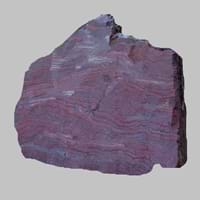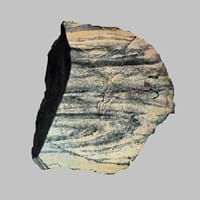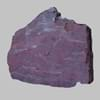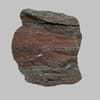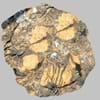Definition
Banded iron formation are distinctive units of sedimentary rock that are almost always of Precambrian age
Oil Shale is a fine-grained sedimentary rock from which oil is extracted
Origin
Western Australia, Minnesota
Unknown
Discoverer
Unknown
Unknown
Etymology
From its formation process
From Old English scealu in its base sense of thing that divides or separate
Class
Sedimentary Rocks
Sedimentary Rocks
Sub-Class
Durable Rock, Medium Hardness Rock
Durable Rock, Soft Rock
Group
Not Applicable
Not Applicable
Other Categories
Coarse Grained Rock, Opaque Rock
Fine Grained Rock, Opaque Rock
Texture
Banded, Trellis
Splintery
Color
Red, Reddish Brown
Black, Brown, Buff, Green, Grey, Red, Yellow
Durability
Durable
Durable
Appearance
Layered, Banded, Veined and Shiny
Muddy
Interior Uses
Decorative Aggregates, Homes
Not Yet Used
Exterior Uses
Paving Stone, Office Buildings
Not Yet Used
Other Architectural Uses
Curbing, Whetstones
Not Yet Used
Construction Industry
As Dimension Stone, Used for flooring, stair treads, borders and window sills.
Cement Manufacture, Construction Aggregate, for Road Aggregate, Serves as an Oil and Gas Reservoir rock
Medical Industry
Not Yet Used
Not Yet Used
Antiquity Uses
Artifacts
Artifacts
Commercial Uses
As a touchstone, Cemetery Markers, Creating Artwork
An Oil and Gas Reservoir
Types
Algoma-type , Lake Superior-type, Superior-type and Taconite
Carbonate-rich Shale, Siliceous Shale and Cannel Shale
Features
Is one of the oldest rock
Easily splits into thin plates, Generally rough to touch, Is one of the oldest rock, Very fine grained rock
Archaeological Significance
Monuments
Not Yet Used
Not Yet Used
Famous Monuments
Not Applicable
Not Applicable
Sculpture
Not Yet Used
Not Yet Used
Famous Sculptures
Not Applicable
Not Applicable
Pictographs
Not Used
Not Used
Petroglyphs
Not Used
Not Used
Figurines
Not Yet Used
Not Yet Used
Formation
The banded iron layers are formed in sea water when oxygen is released by photosynthetic cyano-bacteria. The oxygen then combines with dissolved iron in ocean to form insoluble iron oxides, which precipitated out, forming a thin layer of banded iron formation on ocean floor.
Oil Shale forms on the beds of seas and lakes and its formation starts with the organic debris settling and accumulating at the bottom of a lake or sea which are then transformed into rock with the help of high temperature and pressure.
Mineral Content
Hematite, Magnetite, Quartz
Albite, Biotite, Calcite, Chert, Chlorite, Dolomite, Hematite, Micas, Muscovite or Illite, Pyrite, Quartz, Silica, Sulfides
Compound Content
Fe, Iron(III) Oxide, Silicon Dioxide
Ca, Fe, Mg, Silicon Dioxide, Sodium
Types of Metamorphism
Not Applicable
Not Applicable
Types of Weathering
Chemical Weathering
Biological Weathering, Chemical Weathering, Mechanical Weathering
Types of Erosion
Coastal Erosion, Wind Erosion
Chemical Erosion, Sea Erosion, Water Erosion
Grain Size
Large and Coarse Grained
Very fine-grained
Fracture
Uneven, Splintery or Conchoidal
Not Available
Porosity
Highly Porous
Highly Porous
Specific Gravity
5.0-5.3
2.2-2.8
Transparency
Translucent to Opaque
Opaque
Density
Not Available
2.4-2.8 g/cm3
Resistance
Heat Resistant, Impact Resistant, Pressure Resistant, Wear Resistant
Heat Resistant, Impact Resistant
Deposits in Eastern Continents
Asia
China, India, Iran, Iraq, Oman, Russia, Saudi Arabia, Taiwan, Thailand, Vietnam
Bangladesh, China, India, Israel, Jordan, Russia, Syria, Thailand, Turkey
Africa
Kenya, Morocco, South Africa, Tanzania
Ethiopia, Kenya, Morocco, South Africa, Tanzania
Europe
Austria, France, Greece, Italy, Malta, Poland, Portugal, Serbia, Spain, Sweden, United Kingdom
Austria, France, Germany, Greece, Italy, Romania, Scotland, Spain, Sweden, Switzerland
Others
Greenland, Mid-Atlantic Ridge
Greenland, Not Yet Found
Deposits in Western Continents
North America
Canada, Mexico, USA
Canada, USA
South America
Bolivia, Brazil
Bolivia, Brazil, Chile, Colombia, Ecuador, Peru, Venezuela
Deposits in Oceania Continent
Australia
New South Wales, Queensland, South Australia, Western Australia
New South Wales, New Zealand, Queensland, Victoria, Western Australia
Banded iron formation vs Oil shale Characteristics
Though some rocks look identical, they have certain characteristics which distinguish them from others. Characteristics of rocks include texture, appearance, color, fracture, streak, hardness etc. Banded iron formation vs Oil shale characteristics assist us to distinguish and recognize rocks. Also you can check about Properties of Banded iron formation and Properties of Oil shale. Learn more about Banded iron formation vs Oil shale in the next section. The interior uses of Banded iron formation include Decorative aggregates and Homes whereas the interior uses of Oil shale include Not yet used. Due to some exceptional properties of Banded iron formation and Oil shale, they have various applications in construction industry. The uses of Banded iron formation in construction industry include As dimension stone, Used for flooring, stair treads, borders and window sills. and that of Oil shale include Cement manufacture, Construction aggregate, For road aggregate, Serves as an oil and gas reservoir rock.
More about Banded iron formation and Oil shale
Here you can know more about Banded iron formation and Oil shale. The life cycle of a rock consists of formation of rock, composition of rock and transformation of rock. The composition of Banded iron formation and Oil shale consists of mineral content and compound content. The mineral content of Banded iron formation includes Hematite, Magnetite, Quartz and mineral content of Oil shale includes Albite, Biotite, Calcite, Chert, Chlorite, Dolomite, Hematite, Micas, Muscovite or Illite, Pyrite, Quartz, Silica, Sulfides. You can also check out the list of all . When we have to compare Banded iron formation vs Oil shale, the texture, color and appearance plays an important role in determining the type of rock. Banded iron formation is available in red, reddish brown colors whereas, Oil shale is available in black, brown, buff, green, grey, red, yellow colors. Appearance of Banded iron formation is Layered, Banded, Veined and Shiny and that of Oil shale is Muddy. Properties of rock is another aspect for Banded iron formation vs Oil shale. The hardness of Banded iron formation is 5.5-6 and that of Oil shale is 2-3. The types of Banded iron formation are Algoma-type , Lake Superior-type, Superior-type and Taconite whereas types of Oil shale are Carbonate-rich Shale, Siliceous Shale and Cannel Shale. Streak of rock is the color of powder produced when it is dragged across an unweathered surface. The streak of Banded iron formation and Oil shale is white. The specific heat capacity of Banded iron formation is 3.20 kJ/Kg K and that of Oil shale is 0.39 kJ/Kg K. Depending on the properties like hardness, toughness, specific heat capacity, porosity etc., rocks are resistant to heat, wear, impact, etc.Banded iron formation is heat resistant, impact resistant, pressure resistant, wear resistant whereas Oil shale is heat resistant, impact resistant.
